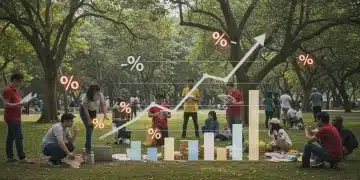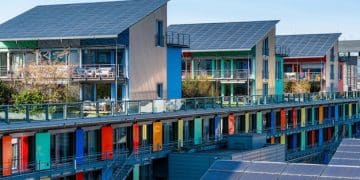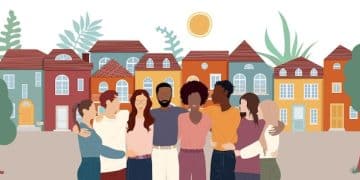Community Resource Mapping: Identifying Gaps & Opportunities
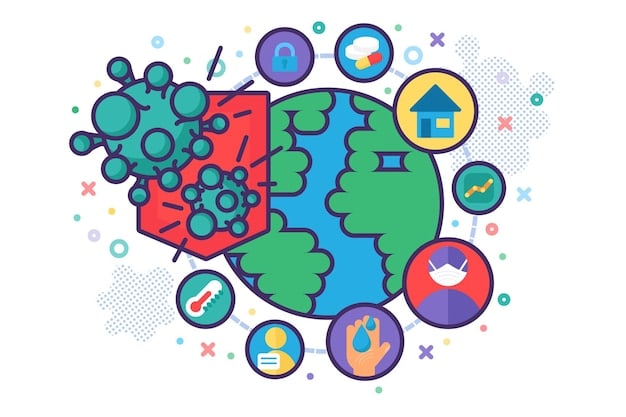
Community Resource Mapping is a systematic process of identifying and visualizing the assets within a community, helping to pinpoint unmet needs and possibilities for enhancing local services.
Community Resource Mapping: Identifying Gaps and Opportunities for Improvement is crucial for creating resilient and thriving communities. By visually representing available resources, we can identify where support is strong and where it falls short, leading to more effective community development strategies.
Understanding Community Resource Mapping
Community resource mapping is a method used to identify and visually represent the resources available within a specific community. This process helps to understand the strengths and weaknesses, revealing opportunities for improvement and growth.
The Purpose of Community Resource Mapping
The primary purpose is to provide a comprehensive overview of the resources, assets, and services within a community. This overview can guide decision-making, facilitate better allocation of resources, and foster collaboration among local organizations.
Key Components of Resource Mapping
- Data Collection: Gathering information about available resources through surveys, interviews, and existing databases.
- Visualization: Creating visual representations (maps, charts) to illustrate where resources are located and how they are distributed.
- Analysis: Examining the data to identify gaps, overlaps, and areas of high need.
- Action Planning: Developing strategies to address identified needs and leverage existing resources effectively.
Resource mapping isn’t just about identifying what exists; it’s about understanding how these resources interconnect and contribute to the overall well-being of the community. This holistic view is vital for creating sustainable and impactful solutions.
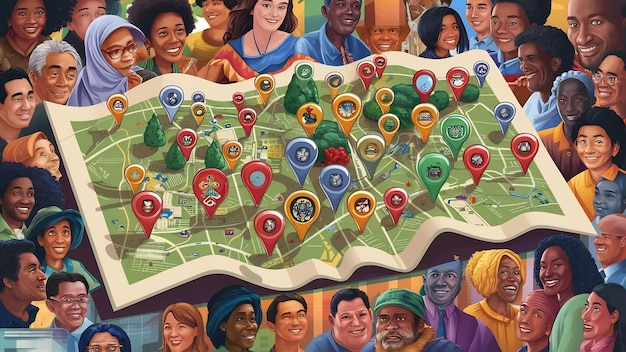
Identifying Existing Community Resources
Before any meaningful improvement can occur, it’s essential to accurately identify and catalog the existing resources within a community. This inventory becomes the foundation upon which all subsequent analysis and planning are based.
Types of Community Resources
Community resources encompass a wide range of assets that contribute to the social, economic, and physical well-being of residents. These resources can be tangible, like parks and libraries, or intangible, like community knowledge and social networks.
Identifying resources is often done through surveys and direct engagement with community members. Understanding the nuances of what’s available and how it’s utilized is critical.
Methods for Inventorying Resources
- Surveys: Distributing questionnaires to residents and local organizations to gather information about available resources and services.
- Interviews: Conducting one-on-one or group interviews with key stakeholders to gain deeper insights into community assets.
- Focus Groups: Organizing small group discussions to explore specific topics and gather qualitative data about resource availability and accessibility.
- Community Walks: Physically exploring the community to identify visible resources and amenities.
The process of inventorying resources should be inclusive, ensuring that all voices are heard and that a comprehensive picture of the community’s assets is captured. This inclusive approach leads to more accurate and relevant mapping efforts.
Analyzing Gaps in Community Resources
One of the most critical steps in community resource mapping is analyzing gaps between what exists and what is needed. This analysis helps to pinpoint areas where the community is underserved and where targeted interventions can have the greatest impact.
Methods for Analyzing Resource Gaps
Analyzing resource gaps involves comparing the available resources to the needs of the community. This can be done through various methods, including:
- Needs Assessments: Conducting formal assessments to identify the specific needs and priorities of the community.
- Data Analysis: Examining demographic data, health statistics, and other relevant information to identify areas of high need.
- Community Forums: Hosting public forums to gather community input on resource gaps and potential solutions.
It’s important to approach gap analysis with a broad perspective, considering not only the quantity of resources but also their quality, accessibility, and cultural relevance. A resource might exist on paper but be unusable for certain segments of the population.
Prioritizing Resource Gaps
Not all resource gaps are created equal. Some may have a more significant impact on community well-being than others. Prioritizing these gaps ensures that resources are allocated effectively to address the most pressing needs.
This prioritization often involves consulting with community leaders, stakeholders, and residents to determine which gaps should be addressed first. Factors to consider may include the number of people affected, the severity of the problem, and the feasibility of implementing solutions.
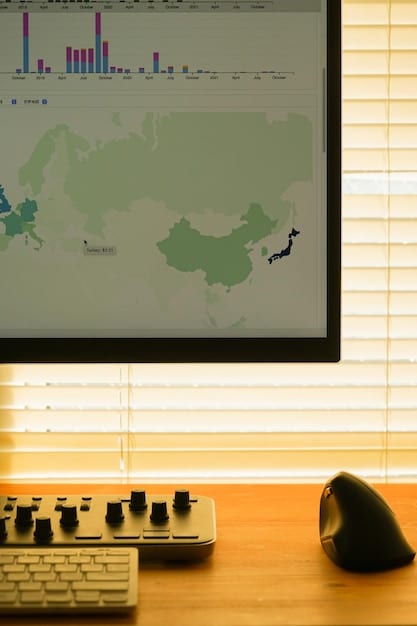
Identifying Opportunities for Improvement
Beyond identifying gaps, community resource mapping also uncovers opportunities to enhance existing resources and create new ones. These opportunities can lead to a more resilient and thriving community.
Collaborative Partnerships
One of the most effective ways to improve community resources is through collaborative partnerships. By bringing together different organizations and stakeholders, communities can leverage diverse expertise and resources to address complex challenges.
For example, a local hospital might partner with a community center to offer health education programs, or a business might donate resources to support a local school. These partnerships can create a synergy that leads to greater impact.
Innovation and Resourcefulness
Community resource mapping can also foster innovation and resourcefulness by revealing untapped assets and unconventional solutions. Sometimes, the most effective solutions come from within the community itself.
This might involve repurposing existing spaces, creating new programs that leverage community knowledge, or finding creative ways to fundraise for needed resources. The key is to remain open to new ideas and approaches.
Implementing Strategies for Resource Enhancement
Once gaps and opportunities have been identified, the next step is to develop and implement targeted strategies for resource enhancement. This requires careful planning, coordination, and a commitment to ongoing evaluation.
Community-Led Initiatives
The most successful resource enhancement strategies are those that are led by the community itself. When residents are actively involved in planning and implementation, they are more likely to take ownership of the results and ensure that the initiatives are sustainable.
This might involve forming community task forces, hosting community workshops, or creating community-based organizations. The key is to empower residents to take the lead in shaping their own community.
Measuring Impact and Sustainability
It’s crucial to measure the impact of resource enhancement strategies to determine whether they are achieving the desired results. This measurement should be ongoing, with regular evaluations to assess progress and make adjustments as needed.
Sustainability is another key consideration. Resource enhancement strategies should be designed to last, with funding sources, leadership structures, and community support that can withstand the test of time.
Tools and Technologies for Resource Mapping
Modern technology offers powerful tools for community resource mapping, making the process more efficient, accurate, and accessible. These tools can help communities collect, visualize, and analyze data more effectively.
Geographic Information Systems (GIS)
GIS software allows communities to create interactive maps that display the location of resources, demographic data, and other relevant information. This can help to identify patterns and trends that might not be apparent otherwise.
GIS can be used to map everything from food banks and healthcare facilities to parks and transportation routes. By overlaying different layers of data, communities can gain a deeper understanding of their assets and needs.
Data Visualization Platforms
Data visualization platforms offer tools for creating charts, graphs, and other visual representations of community data. These platforms can help to communicate complex information in a clear and compelling way.
Examples of data visualization platforms include Tableau, Power BI, and Google Data Studio. These tools can be used to create dashboards that track key indicators and monitor progress over time.
| Key Point | Brief Description |
|---|---|
| 📍 Identifying Resources | Cataloging existing community resources for accurate planning. |
| 🔍 Analyzing Gaps | Pinpointing areas where community resources are lacking. |
| 🤝 Collaborative Partnerships | Enhancing resources through partnerships and shared expertise. |
| 📊 Measuring Impact | Regularly evaluating the effectiveness of resource enhancement strategies. |
Frequently Asked Questions (FAQ)
▼
The primary goal is to identify and visualize available resources, helping communities understand their strengths, weaknesses, and opportunities for improvement. It aids in better resource allocation and strategic planning.
▼
Identifying gaps highlights areas where a community is underserved, enabling targeted interventions and efficient allocation of resources to address critical needs and promote equitable development.
▼
Tools like GIS and data visualization platforms enhance data collection, analysis, and communication, making the mapping process more efficient and insightful. They enable interactive maps and dashboards for better understanding.
▼
Community members are essential stakeholders. Their input through surveys, interviews, and forums ensures that the mapping process reflects their needs and priorities, and that strategies are community-led and sustainable.
▼
By identifying both available resources and service gaps, communities can strategically address needs, foster collaboration, and promote innovation, leading to a more resilient, equitable, and thriving environment for all residents.
Conclusion
Community Resource Mapping: Identifying Gaps and Opportunities for Improvement is more than just creating maps; it’s about understanding the intricate web of resources within a community and strategically addressing its needs. By engaging community members, leveraging technology, and fostering collaboration, we can build stronger, more resilient communities where everyone has the opportunity to thrive.

